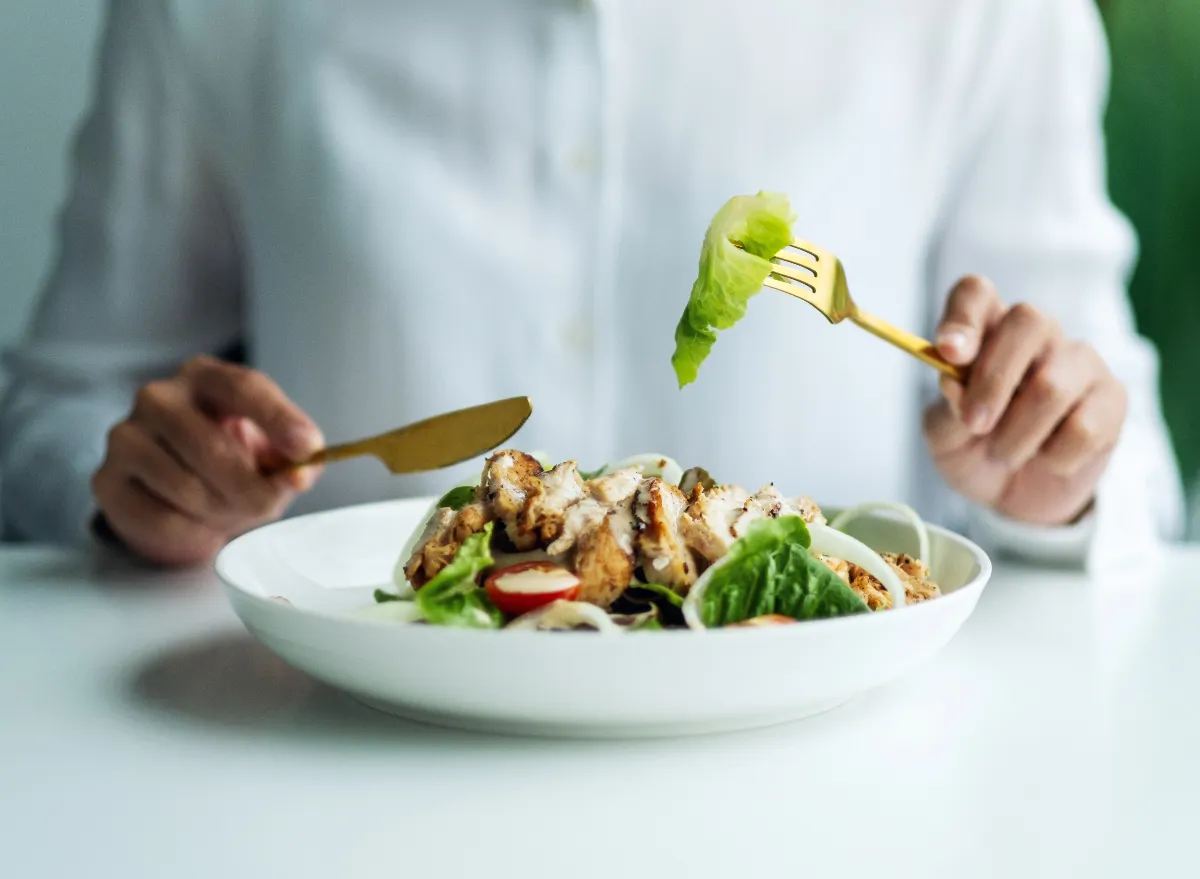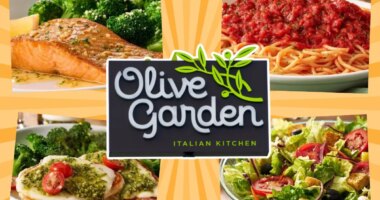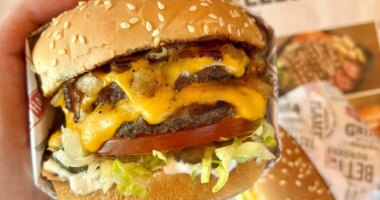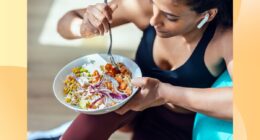The World Wide Web is chock-full of weight loss inspiration. When you head over to TikTok, you’ll see a wide range of short clips where people dish their go-to meal prep hacks, healthy recipes, favorite fat-burning workouts, and new trends that helped them achieve their goal weight. For instance, people on TikTok are “food sequencing” for weight loss and swear by the results. What is food sequencing, might you ask? Eat This, Not That! spoke with Lisa Young, Ph.D., RDN, the author of Finally Full, Finally Slim, a nutritionist in private practice, and a member of our Medical Expert Board, who shares everything you need to know about this healthy eating regimen, along with why it’s beneficial for weight loss.
Keep reading to learn more, and when you’re finished, be sure to check out How To Lose One Pound—Adding Up to Gradual Weight Loss That Lasts.
What is food sequencing and how does it help you lose weight?
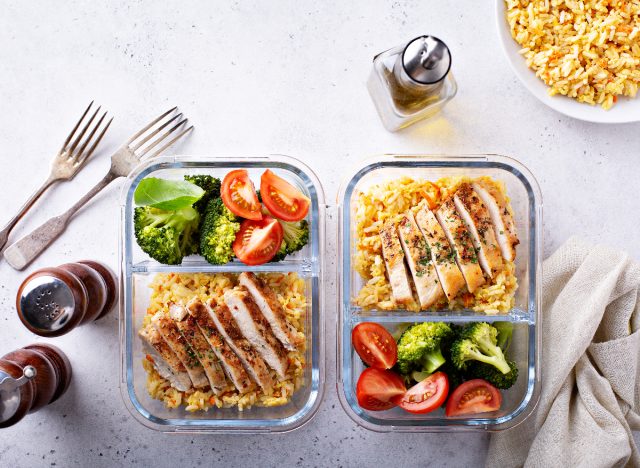

Essentially, food sequencing is an eating regimen where you eat greens or low-starch veggies first, then consume your protein-packed foods, along with fats. The meal would wrap up with a complex carb.
“This practice of eating can be beneficial for weight loss as it is not only important the types of foods you eat, but also the order of intake,” Young tells us. “The reason it can be beneficial for weight loss is because starting off your meal with a fiber-rich food can help to slow the rate at which the food is converted into sugars as well as slowing down the rate of digestion. In addition, proteins and fats take longer to digest and absorb compared to carbohydrates, so filling up your stomach with food contents that will slow down digestion can help keep you full for a longer period of time.”
Research published in Nutrients regarding meal sequencing discovered that consuming protein and/or fat before carbs supports the secretion of “glucagon-like peptide-1 (GLP-1).” GLP-1s have been associated with more gradual gastric emptying, “which also promotes satiety,” Young explains. “However, with that said, what you eat and how much you eat matters more than the order of when you eat.”
READ RELATED: 2 Major Costco Rivals Are Expanding in 2023
People on TikTok advocate for food sequencing to lose weight.
Cory Ruth, MS, RDN, shares in a TikTok video about food sequencing, “Research shows food sequencing—aka eating the foods on your plate in a specific order—improves your PCOS symptoms, lowers your blood sugar, and speeds up fat loss.” Ruth adds, “Protein and fiber both slow gastric emptying, thus slowing the absorption of glucose into our blood. Try this simple strategy for reduced PCOS symptoms like weight gain, hair loss, and irregular periods. There [are] no negative side effects, and it won’t cost you a dime.”
Lisa Axelrad, Nutritionist, is another advocate of food sequencing meals. She explains in a TikTok, “If you find yourself not feeling full or satisfied after a meal, or if you find yourself snacking a lot throughout the day, constantly feeling unsatisfied, there are three different things that you can do to help you feel a little bit more satisfied after eating. This concept is called sequencing your meals.”
We know that snacking throughout the day can lead to consuming unwanted excess calories (which can then lead to weight gain), so food sequencing could be an excellent way for you to stay on track and feel satisfied during your weight loss journey. Another TikTok user, Minahil’s Corner, even stresses in a food sequencing video, “If you’re experiencing cravings that are sabotaging your fat loss goals, this video is for you.”
When you’re seeking weight loss results, it’s always inspiring to turn to individuals who have already been there and done. TikToker AoCheng shares in a video, “This simple trick helped me to maintain my weight and even shed some belly fat over the last year … the simple trick is to change out the sequence [in] which you eat your food … I will always try to eat the vegetable first. Proteins and fats next. Usually, by the time I finish all of these, I’m quite full to finish the carbs already. But the thing is that if I still want to eat carbs, I eat a bit only, and I’m really quite full.”
Alexa Mellardo

